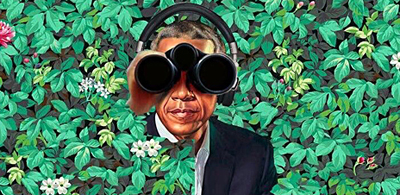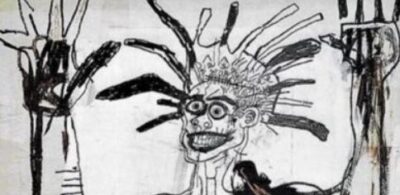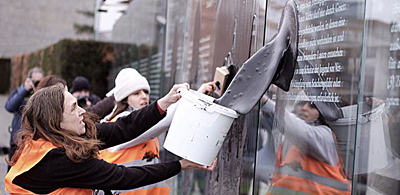Michael Heizer’s City A Scar On The Earth
This is a tale of two cities, though I imagine Charles Dickens never imagined anything like the following. The story has to do with one garden city where gentlepeople exalt art, and another cosmopolis… actually the very same burg, where those identical magnificos step over bodies to see first-class art exhibits.
Wherever you are in Los Angeles, you will come across the homeless, their tent cities sprout up in parking lots, intersections, and under every freeway overpass. Despite the liberal halo of the city many denizens ignore the sight of unhoused people sleeping and living on bus benches, in busses and subways, in parks, and in the doorways of businesses after closing time. I have even witnessed homeless people sleeping in store isles.
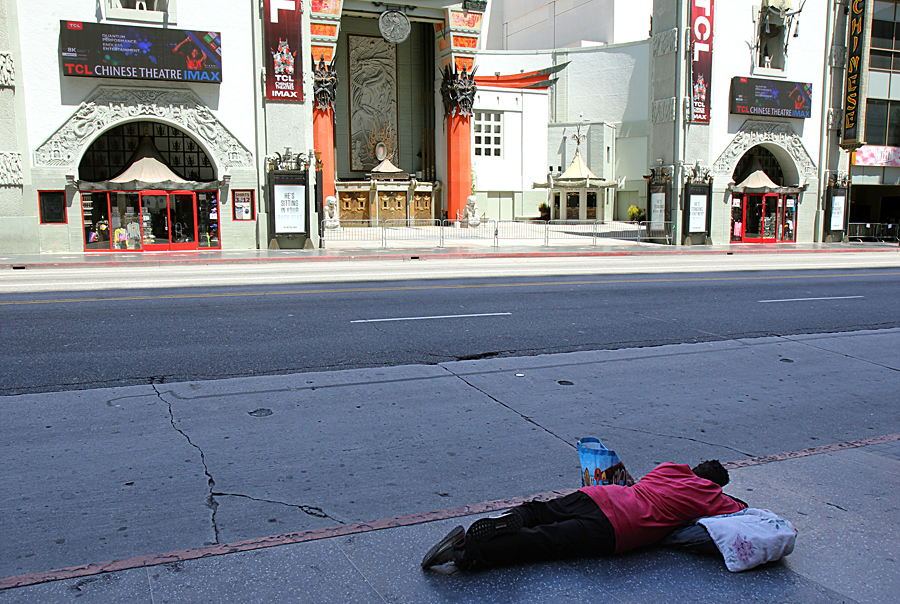
Many of the homeless are decent people, their numbers include Vets and those who simply can’t afford rent, especially after the “Covid crisis” threw many out of work. Conversely, a huge number suffer from drug addiction and mental illness. Everyone in LA has seen disoriented souls shuffling around in filthy rags, pushing shopping carts filled with their worldly belongings. In 2022 the Los Angeles Homeless Services Authority estimated there are over 69,000 homeless people living on the streets; I’m inclined to believe that is a low count.

There are many grim stories in LA’s homeless crisis, some are frightfully tragic, others simply disturbing.
However, the suffering is not unique to Lost Angeles, chronic homelessness exists in the US from coast to coast; I have personally seen it in San Francisco, San Diego, and also in Detroit, Michigan.
Since the war between Russia and Ukraine began Biden has sent more than $65 billion in aid to Ukraine—without the slightest bit of accountability or transparency. Meanwhile, Americans who are homeless live and die on the streets.
Which brings me to the magnificos and their cutting-edge art exhibitions.
Michael Heizer produces “land art.” Beginning in the late 1960s “land artists” altered wild natural landscapes, creating site specific earthworks based on conceptual and minimalist art aesthetics; they mostly used rock, earth, clay, sand, tree branches and twigs, and other natural objects to create their works.

Concurrent with the newfound environmentalist movement, land art oftentimes reflected the concerns of that crusade. One ludicrous example is Richard Long’s minimalist A Line Made By Walking (1967), literally a line worn into a field by the “artist” walking back and forth.
As with Long’s Line, land art is usually extensively documented with photography, and the photos are exhibited in galleries and museums.
In 1969 Heizer created his first land art project in the desert of Moapa Valley near Overton, Nevada. In dynamiting two trenches 30 feet wide and 50 feet deep he removed 240,000 tons of sandstone.
The open trenches cut across the gaping collapsed edge of an eroding plateau; together the geological formations, one natural the other man-made, presented negative space. Heizer titled his dig Double Negative; reportedly it was a statement on the human impact on the environment. But it was really a Double Entendre blasted out with dynamite.

Land art was reputedly a way to defy the commercialization and commodification of art. Let’s see how that worked out.
In 2012 the Los Angeles County Museum of Art (LACMA), at the behest of its director Michael Govan, paid Michael Heizer $10 million for a 340-ton boulder Heizer titled Levitated Mass. The huge granite rock was mounted over a slot located outdoors on the LACMA campus, which allowed viewers to walk beneath it.
For the lowbrow crowd the boulder was a backdrop for selfies. Prior to selling the boulder for $10 million, art-world gatekeepers and their plutocrat allies considered Heizer an exemplar of the postmodern school of art; the boulder sale confirmed that title. On Feb, 25, 2012 I wrote a parody of Heizer’s “Levitated Mass” that I titled Alleviated Masses.
Ironically, Michael Govan decided to demolish the Los Angeles County Museum of Art, and build a new LACMA on its ruins for the reputed cost of $750 million. Beginning Jan. 2020 the wrecking cranes and bulldozers began to destroy the museum. By Feb. 2021 LACMA had been totally obliterated. Naturally, Heizer’s Levitated Mass survived the demolition. Ruins on top of ruins.
Heizer reemerged in Aug. 2022 when the media and art world gatekeepers began promoting his just finished project called City, which opened to the public on Sept. 2, 2022. Heizer started building City in 1970. Located in a remote area of the Nevada desert, the ersatz metropolis is a land art cityscape of dirt and clay mounds, gravel covered plazas, roads leading nowhere, and huge useless concrete structures. It’s all vaguely evocative of ancient pre-Columbian cities.

City is a mile and a half long, and half a mile wide. It was not built to house or shelter anyone, it was meant to be empty.
In 1998 Heizer founded the Triple Aught Foundation to support and maintain his City project. The foundation was joined by bigwigs in the art world like Michael Govan—destroyer of LACMA, and Glenn D. Lowry, director of New York’s Museum of Modern Art. Now the foundation runs the amusement park for Heizer, and has to date raised a $30 million endowment for it. Govan said of City:
“It’s an artwork aware of our primal impulses to build and organize space, but it incorporates our modernity, our awareness of and reflection upon the subjectivity of our human experience of time and space as well as the many histories of civilizations we have built.”
Ultimately City cost around $40 million to construct.
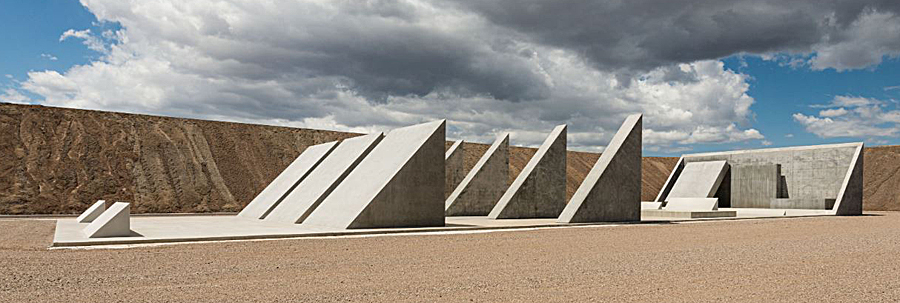
Here’s where the magnificos of the patrician art world and mass media enter the picture. With their liberal politics how do they not see that the spectacle of dedicating a huge sham city for $40 million—a fake urban center meant to house no one, is an obscenity while an estimated 550,000 Americans are homeless? I’m afraid the magnificos understand this all too well… they just don’t care.
US inflation has reached a level not seen in 40 years. Hard-working Americans can only afford enough gasoline to take them to and from work, while a gaggle of bourgeois art buffs swoon over a $40 million boondoggle in the desert.

The long-winded pseudo intellectuals of the art world will tell you that Heizer’s City is a work about “our primal impulses to build and organize space,” as our cities deteriorate and homeless Americans die on the streets.
The Triple Aught Foundation can raise $30 million to sustain Heizer’s vacant empty dead space, but the 69,000 homeless people living on the streets of Los Angeles, well… they don’t have a highfalutin, hoity-toity, blue ribbon art foundation backing them.
At the bottom of the Triple Aught Foundation webpage one finds this statement:
“Triple Aught Foundation respectfully acknowledges that City has been created within the ancestral territories of the Nuwu (Southern Paiute) and Newe (Western Shoshoni), who lived in and around the vicinity and call this land home, as their ancestors did before them.”
Since Heizer and his foundation “respectfully acknowledges” that City is built on land the Paiute and Shoshoni call home, what then do indigenous people receive in exchange, I mean… aside from a pat on the head.
City isn’t a commemorative monument to the Paiute, Shoshoni or any indigenous tribe. While art snobs may compare Heizer’s “masterpiece” to the ancient Maya city of Chichén Itzá in Mexico’s Yucatan, it’s a false comparison. Heizer created an outrageously expensive imitation settlement feigning indigenous aesthetics. It sits on Indian land pretending to be profound. Liberals ordinarily condemn such nonsense as “cultural appropriation,” but all I read are accolades for Heizer.

One could construe England’s prehistoric site of Stonehenge as “land art,” it was created over 4,000 years ago by unknown clans. You could interpret the native American Mound Builders of 5,000 years ago as “land artists.” Or, it might come to mind that Heizer has inappropriately exploited the culture and identities of the ancients, and that today’s art and aesthetics are moving backwards.
My problem with City is that it is a heartless work, created during a period when art had already become senseless and indifferent. Heizer’s works, especially City, summarizes the “luxury politics and aesthetics” of today’s postmodern art; it is a monument only to the narcissism of its creator.
I speak as a humble working artist who believes art is a healing force for humanity. I’m not a theologian or moralizer, but as the fussiness surrounding Heizer and City clearly illustrates, today’s art world has a broken moral compass.
I’m not opposed to generous amounts of money being used to create art, or artists profiting from their works, but we’ve swaggered way beyond that. Today’s vainglorious and self-righteous art world gloatingly dances around the Golden Calf… it has become an abomination.
I believe an artwork can be “priceless” in a spiritual sense, but when you start talking about a $40 million dollar imitation city, my eyes glaze over. What price do we put on the lives of homeless Americans? What cost do we put on shattered American communities and hollowed out ravaged municipalities?

Michael Heizer built City somewhere in the Nevada desert. A desert’s ecology is not barren, lifeless, or quiet. You just need to rediscover how to look and listen.
Learn to hear the raven’s call carried on the wind. Watch for bighorn sheep and the tortoise. The desert is brimming with magic.
The sun brings the world life each morning at dawn, the moon and stars cradle all with silvery light. The universe can be seen in a single blossoming cactus flower. Be silent and calm and you will feel the wandering indigenous and pioneer spirits stirring. The desert is a sacred place I love to visit. But Michael Heizer’s City is not hallowed and sacrosanct… it is a scar on the earth.



